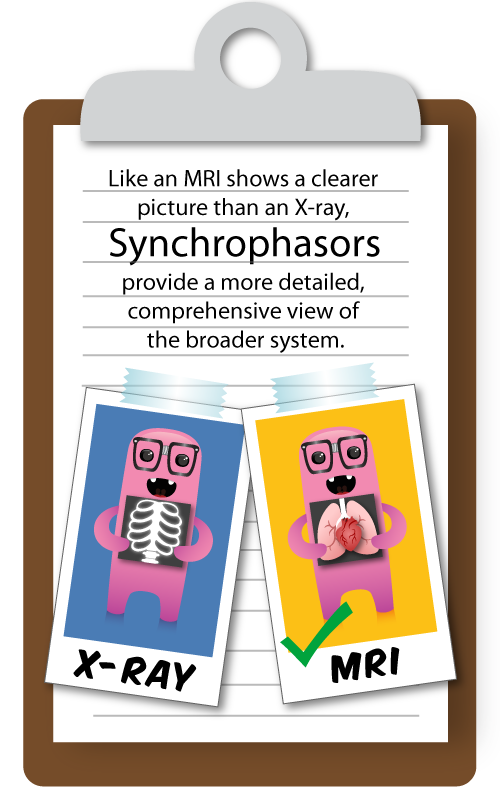Synchrophasors
 PJM is working with its members and industry organizations to support installation of synchrophasors, also known as phasor measurement units or PMUs. Synchrophasors improve operators’ visibility of the grid by painting a more detailed and clearer picture of the transmission system at any given moment. You can think of synchrophasor data as an MRI, rather than an X-ray: it allows you to see more, and at a higher resolution.
PJM is working with its members and industry organizations to support installation of synchrophasors, also known as phasor measurement units or PMUs. Synchrophasors improve operators’ visibility of the grid by painting a more detailed and clearer picture of the transmission system at any given moment. You can think of synchrophasor data as an MRI, rather than an X-ray: it allows you to see more, and at a higher resolution.
With the aid of a $14 million U.S. Department of Energy stimulus grant, PJM and its member transmission owners installed more than 400 synchrophasors in over 100 substations in 10 states. Additionally, new generators greater than 100 MW are required to install and operate a PMU near the generator output terminals and stream this data to PJM. In 2020, PJM stakeholders added a PMU placement requirement into the Regional Transmission Expansion Plan process to expand PMU observability across the bulk electric system.
Learn about the latest synchrophasors developments and other key facts about synchrophasor technology.
| PJM Phasor Measurement Unit Statistics |
| Total PMUs (including external companies) |
966 |
| PMUs installed within PJM's footprint |
687 |
| Substations with PMUs installed |
263 |
| Sampling rate |
30x per second |
| Data storage |
~ 42 GB of PMU data daily |
Synchrophasors take high-speed measurements of voltage, current and frequency. The measurements, typically taken 30 times a second, are time-stamped with signals from global positioning system satellites, enabling data from different locations and utilities to be time-synchronized and combined to create a detailed, comprehensive view of the broader system.
This technology combined with advanced analytical software supports wide-area monitoring, power system planning and the analysis of grid disturbances. It offers significant benefits for integrating renewable and intermittent resources, automating controls for transmission and demand response, managing transmission congestion and improving system modeling. Modeling is important because planning, operations, and markets rely heavily on computer models of the grid. Ensuring that these models accurately represent the physical behavior of the system is critically important.